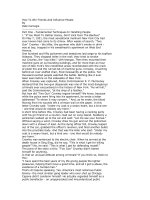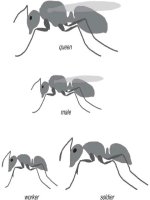how world war i and world war ii influence fashion
Bạn đang xem bản rút gọn của tài liệu. Xem và tải ngay bản đầy đủ của tài liệu tại đây (31.71 KB, 1 trang )
EZ report, dumb topic Excellent report. Covered all areas.
How World War I and World War II influence fashion.
Wars and social changes brought the last radical the type of clothing that seemed appropriate.
Since World War I and World War II, men and women's cloths have changed dramatically. The
United States was one of the most involved countries in both of these wares. Industrial and social
change was always around.
Women's clothes seen to have changed more during the time of war. A successful revolt by
women against social and political restrictions led to the disappearance of physical restrictions of
the corset. Almost for the first time in five centuries, the natural shape of women reappeared in
clothing after World War I (1914-1919), as did the practice of revealing the legs. During World
War I women were employed in factories, the wearing of long dresses became bothersome, so
women's dresses started to become shorter. They adopted the 'Boyish' look. Loose, unfitted skirts
that fell just below the knee were popular. After World War I most clothes were being produced
by mass production. Due to mass production, Women's fashions were changing more rapidly than
ever. By the mid-1920s skirts had above the knee. By the 1930s women were wearing trousers
Men's clothing changed very little before and after war. Before World War I, double breasted and
single breasted suits were popular. After was they sill were only know they became a little more
radical. Solid color shirts in combination with wild ties accompanied their traditional suits. Out
of work men's cloths became more durable. Sorts wear was the next popular style for the home
environment
Since that time, almost any experiment in style has been labeled fashion. Industry, because of the
war, had changed so they change everything with it. The close alliance of the garment industry
and the advertising business in the last 50 years has, in the opinion of some observers, killed
fashion in its traditional sense and replaced it with faddism. The last real attempt at fashion was
the New Look of the late 1940s and early 1950s, actually an attempt to retreat from the horrors of
World War II (1939-1945).
If it was not for these new trends and constant changes. Lifestyles would never change over time.
Industry makes money off of new ideas. Changes in peoples everyday lives make them who they
are. If no one ever changed their mind about anything, we might still be in a war.









